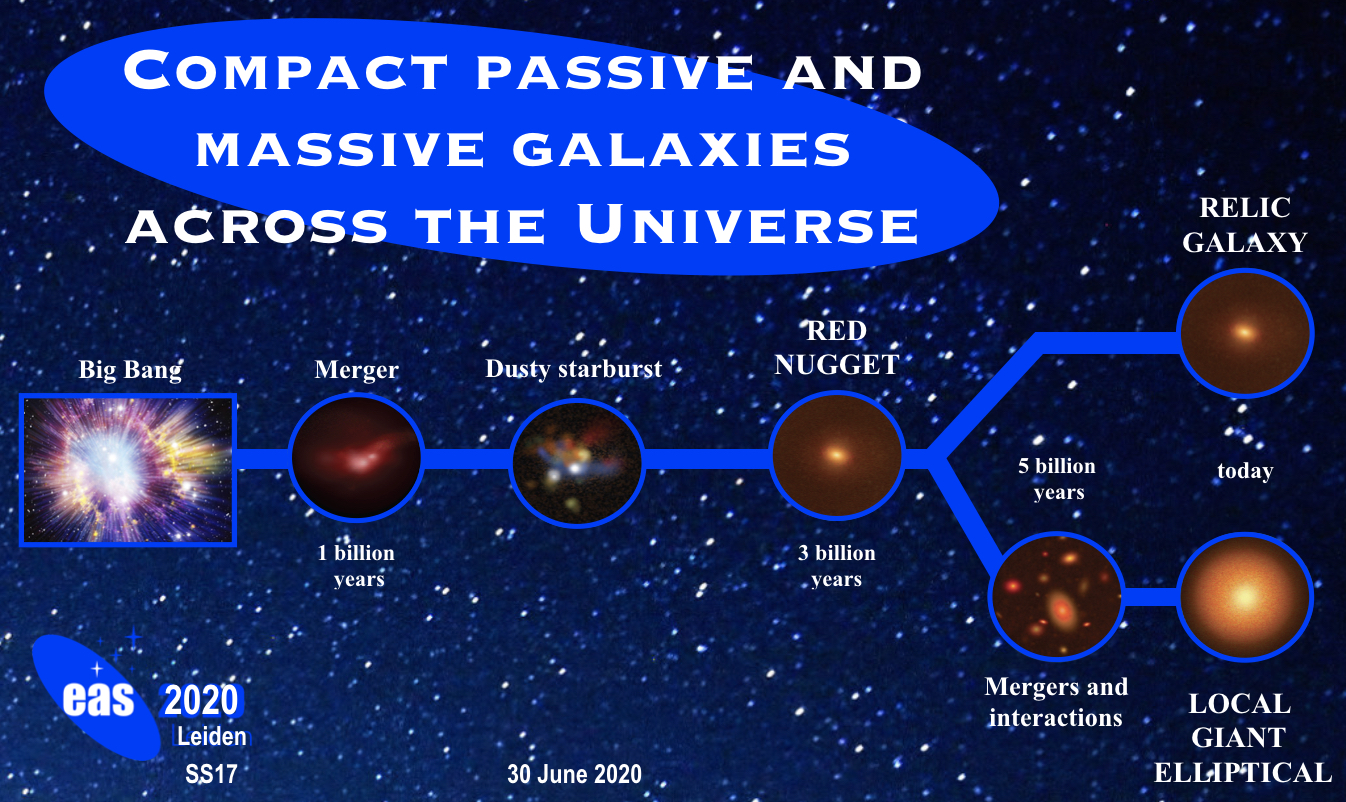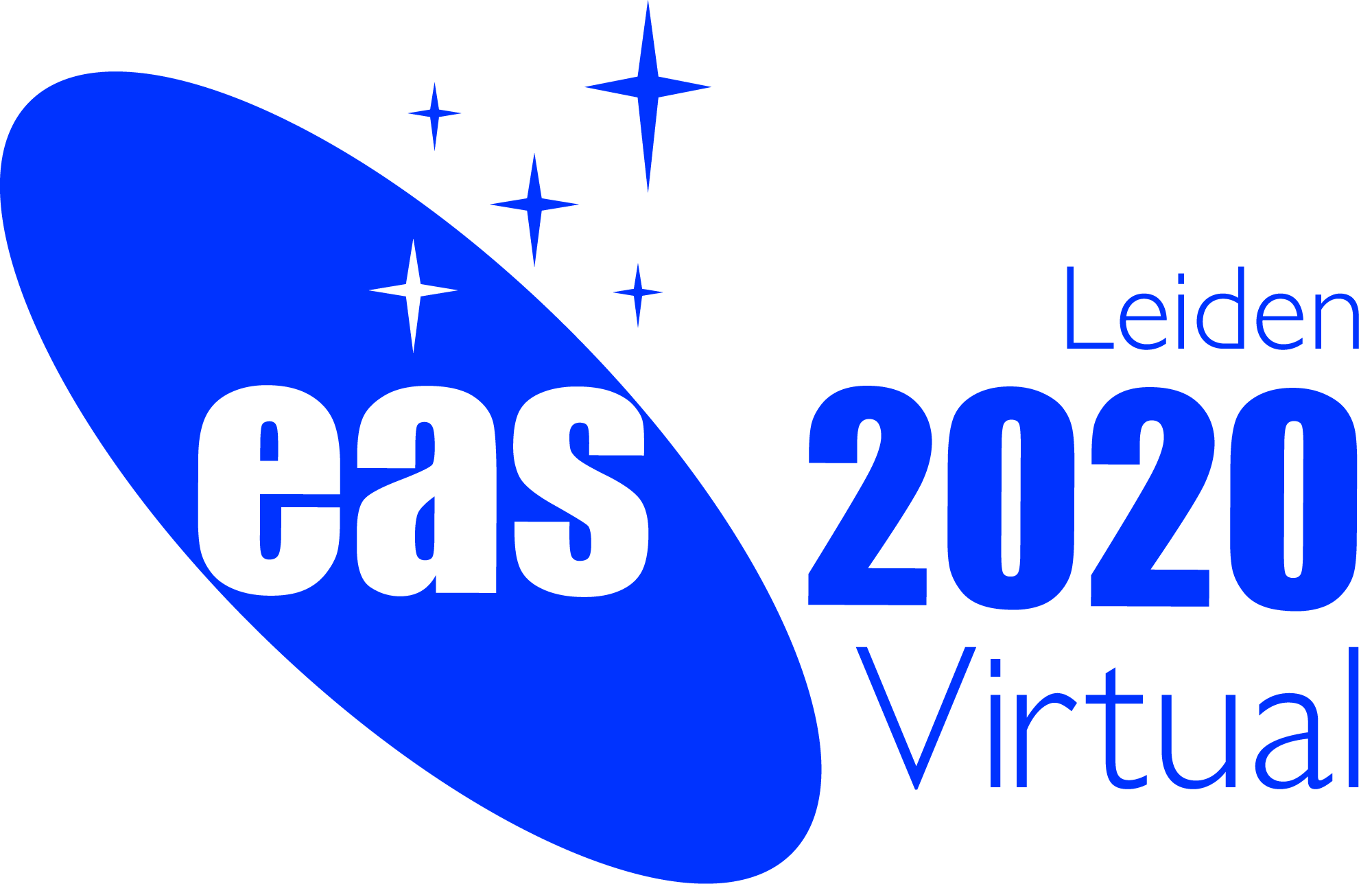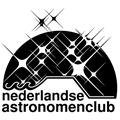Special Session SS17
30 June 2020
Compact passive and massive galaxies across the Universe

News:
The main purpose of this EAS Special Session is to review the state-of-the-art of observations and simulations on the most dense, massive and compact quiescent galaxies across the Universe: from high-z dense red galaxies to local relics, with the aim of tracing the time evolution of these peculiar and rare objects.
Aims and scope
High-z massive compact galaxies are believed to be the ancient remnants of the first galaxies and the "seeds" of the monster Early-Type Galaxies (ETGs) we see today.
After forming early in cosmic time, at z > 2, through a violent and fast dissipative series of processes, and after rapidly quenching the star formation, normally these very compact and massive red objects would experience mergers and gas inflows increasing their size by a factor of ~4-5 and becoming the giant local ETGs. Nevertheless, a small fraction of them survives intact until the present day Universe, without experiencing any merger or interaction, massive (M~1011 Msun) and compact (Reff < 2 kpc): the so-called Relic Galaxies.
Relics are perfect laboratories to study the "in-situ" stellar population of massive old ETGs and shed light on their first phase of mass assembly and their subsequent evolution.
In the last few years large effort has been devoted to the search, spectroscopic follow-up and study of high- and low-z compact, massive and passive galaxies (CMPGs).
Wide-sky surveys (SDSS, WINGS, KiDS, COSMOS,...) have been of enormous help in finding and building statistically large samples of CMPGs, at all redshifts, while new instrumentation, such as IFS with adaptive optics, or infrared spectroscopy, helps in confirming their compact nature, studying in great detail the internal structure, kinematics and stellar population of a smaller sample of objects. Cosmological simulations, in turn, must be able to predict the existence of these objects and are crucial to measure number densities and correlate these with possible formation scenarios.
With this EAS Special Section we aim at bringing together experts working in the low and high-z domain, as well as in cosmological simulations, to review the state-of-the art on the topic and address the following questions:
- - How many CMPGs exist in the Universe and how did they form in the early Universe?
- - How can they passively evolve through cosmic time without experiencing any interaction?
- - How many survive untouched until the present day?
- - Do relics live in more crowded or sparser environments?
- - Can current cosmological simulations predict these numbers?
- - Is there a physical scenario able to explain all the current observational results?
- - What can we learn on the merging history and the evolution of the most massive ETGs?
- - Are the progenitors of all local massive ETGs born compact?
- - What are the facilities, instrumentations and methodologies which will improve our understanding of the formation of both CMPGs and their parent population of ETGs?
Programme
This SS17 is organized in 3 blocks of 1.5 hours each. We identify three main discussion topics:
- Compact red massive galaxies in the high-z Universe
- Finding, counting and characterizing very compact massive galaxies at intermediate and low redshift
- Relics in the local Universe: detailed kinematics, dynamical and stellar population studies of single objects
Each block will start with a review talk, followed by a number of contributed, shorter talks.
Invited speakers
- Fernando Buitrago, FCT Fellow, Instituto de Astrofísica e Ciências do Espaço, Lisbon, Portugal
- Ivana Damjanov, Canada Research Chair and Associate Professor at Saint Mary's University, Halifax, Canada
- Anna Ferré-Mateu, Junior Leader Research Fellow, Institute of Cosmos Sciences UB, Barcelona, Spain
Scientific organisers
- Chiara Spiniello (Chair), INAF-Osservatorio Astronomico di Capodimonte, Naples, Italy
- Crescenzo Tortora (Co-chair), INAF-Osservatorio Astrofisico di Arcetri, Florence, Italy
- Bianca Poggianti, INAF-Osservatorio Astronomico di Padova, Italy
- Ignacio Trujillo, Instituto de Astrofísica de Canarias, La Laguna, Tenerife, Spain
- Arjen van der Wel, Ghent University, Ghent, Belgium
Contact
Updated on Thu Dec 19 23:28:04 CET 2019
|

 A power cut will shut down all EAS services on Tuesday, 10 January 2017 starting at 7:30 CET.
A power cut will shut down all EAS services on Tuesday, 10 January 2017 starting at 7:30 CET.



